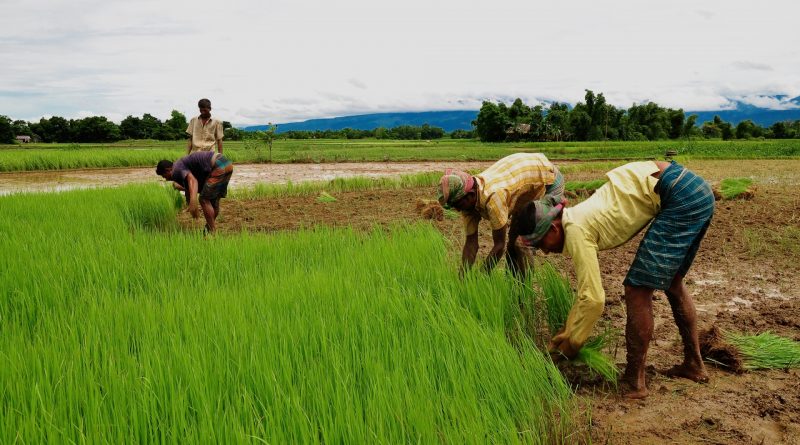How many inhabitants can live on Earth?
How many inhabitants can live on Earth?
Do we want to play a bit?
Well, since in the “play” there is the future of Human Life on Earth, perhaps the play term is quite irreverent, and then we transform the game into simulation and understand how many people could theoretically live on our beautiful blue planet.
To do this simulation you have to start from reliable and verifiable data and to synthesize this simulation (which is very complex) to simplify some passages.
The first starting point is to know the cultivated lands: Feeding is the starting point of all estimate.
To do this then you have to know the agricultural area used.
The agricultural area used, abbreviated in SAU, is the sum of farm land intended for agricultural production.
SAU includes the areas on which arable land, agricultural woody crops, fruit chestnuts, permanent meadows, pasture lands and nurseries are present. The underground areas dedicated to fungiculture are excluded (but which, in the world, have little impact).
They do not fall under the SAU but in the unused farmland those land that is temporarily unused, but on which cultivation could easily be restored with ordinary farming practices (thus excluding the deforestation or unloading of uncultivated land). The sum of the SAU and the unused agricultural area provides the total agricultural area (abbreviated to SAT).
They do not make part of SAU (or SAT) areas occupied by buildings (eg dwelling, storage, animal shelter …) or those intended for wood or woody arboriculture, even though in properties or in use of the ‘ farm.

Reported to the total surface area of land (about 15 billion hectares), SAU accounts for about one third of the total, ie about 5 billion hectares, that is:
3.4 billion hectares of pasture land (including alpine pastures);
1.4 billion hectares of arable land;
140 million hectares of permanent crops (orchards, palm trees, vineyards, tea or coffee cultivation).
Despite the overturning and cultivation of vast forest areas in Brazil, Africa and Indonesia (between 12 and 13 million ha per year), the surface of arable land remains almost constant since the 1970s due to the losses caused by the salinisation of irrigated areas, the depletion and loss of agrarian soil and the advance of urbanization (and this is the long saying about the devastating effects of modern agriculture).
At this point another parameter on which to pivot is the agricultural yield. And to avoid getting into complicated factors of conversion between agricultural yields / nutritive and procurated caloric needs, we refer to two widely spread crops on the planet: wheat and corn.
Agricultural yield is also affected by the different technologies and knowledge of local cultures. Wheat has a world average yield of 2.4 t / ha, while the same yield rose to 2.9 in the European and North American area, despite the worst climate conditions. Similarly, the yield of maize ranges from 4.1 to 4.9 in the world for the most industrialized area.
Now, for the sake of further synthesis, we hypothesize to refer to yield, and hence to world production quantities, only to wheat data (so let us put ourselves in a more cautious way of calculating) and to use the lowest yield that is 2, 4 t / ha. Among other things, using this yield, we approach a lot of those low-impact production techniques (which do not make use of chemistry but rotation techniques / internal reuse of organic matter and the main factors of production).
Let’s make a further decoupling to this yield and bring it to 2 T / ha, considering that we want to fully follow the dictates of 100% conservative farming (thermodynamically and ecologically correct).
By multiplying this value for SAUs (as if all were wheat, we know it is not so but we hypothesize that) we would have a global annual total wheat production of: 2 (T / ha) x 5 (billions of ha) 10 billion tons of wheat.
At this point we have to enter another parameter to understand, in terms of nutritional power, how many people can be fed per year.
Considering that every Kg of wheat equals about 3,390 calories (for an adult), we think we can say that with 3,000 calories per day we can feed the world average person (average among adults, the elderly, the kids). These calories then become 1,095,000 calories per year per person.
At this point it is that by multiplying 10 billion tons of wheat x 3,390,000 (equivalent calories of a wheat T) it has the value of 33,900,000,000,000,000 calories annually.
If we divide at this point the number 33.900.000.000.000.000: 1.095.000 = 30.958.904.110 (with rounding of the last digit). Yes, more than 30 billion people could live.
This calculation, which has been kept prudent not considering the possibility of innovative production techniques, considering it made below the world average, and with a sustainable farming organization, gives us impressive numbers.
Yet today it is starving (and the image on its head does not survive bad interpretations) and the predominant information tells us that we are at the limit of the planet’s capacity.
The truth is that the lifestyle (incredibly energetic) of western countries is no longer viable and, on the other hand, an industrial and mercantile matrix information (on which multinationals play a predominant role) wants to increase certain styles of life (and therefore also agriculture) without the future.
When Governments will become Sovereigns again and Free then that day we could consider it a beautiful sunny day and, in the light, every reasoning will be clearer and clearer.
Guido Bissanti

